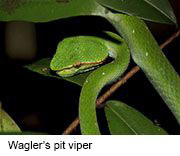- Navigating Your Midlife Crisis: Embracing New Possibilities
- City Raccoons Showing Signs of Domestication
- Mapping the Exposome: Science Broadens Focus to Environmental Disease Triggers
- One Week Less on Social Media Linked to Better Mental Health
- Your Brain Changes in Stages as You Age, Study Finds
- Some Suicide Victims Show No Typical Warning Signs, Study Finds
- ByHeart Formula Faces Lawsuits After Babies Sickened With Botulism
- Switch to Vegan Diet Could Cut Your Greenhouse Gas Emissions in Half
- Regular Bedtime Does Wonders for Blood Pressure
- Dining Alone Could Mean Worse Nutrition for Seniors
Where Snakebites Are Deadliest

Where you live in the world may determine whether you’ll survive a snakebite.
About 93 million people worldwide live in remote regions where there are venomous snakes. If bitten, these folks are at increased risk of death due to limited access to anti-venom drugs, researchers said.
“Understanding where venomous snakes live and people’s proximity to effective treatments are the two most important steps toward reducing deaths. Our analysis identifies communities in greatest need,” researcher David Pigott said in a University of Washington news release.
Pigott is an assistant professor at the university’s Institute for Health Metrics and Evaluation (IHME).
Africa is home to most of the nations where people are more likely to die from a snakebite, Pigott’s team determined. Those countries include Benin, Congo, Ethiopia, Nigeria and South Sudan.
Black mambas, cobras, vine snakes and carpet vipers are just a few of the deadly snakes on the African continent.
Myanmar in Asia — home to Russell’s viper, banded krait and king cobra — and Papua New Guinea are other extremely high-risk regions, the researchers found.
For the study, the researchers identified regions where it is hard to receive treatment. Then they generated range maps for 278 species of venomous snakes.
Previous research estimated that 5 million people worldwide are bitten every year by poisonous snakes, and about 125,000 of them die.
“In spite of the numbers, snakebites received relatively limited global attention,” said study co-author Simon Hay, director of geospatial science at IHME. “We hope this analysis can broaden the discussion about snakes.”
Last year, the World Health Organization categorized snakebite as a major neglected tropical disease. Subsequently, the WHO said a plan must be developed to help countries provide greater access to snakebite treatment.
The study was published July 12 in The Lancet.
More information
The U.S. Centers for Disease Control and Prevention offers advice on preventing and responding to snakebites.
Source: HealthDay
Copyright © 2025 HealthDay. All rights reserved.










